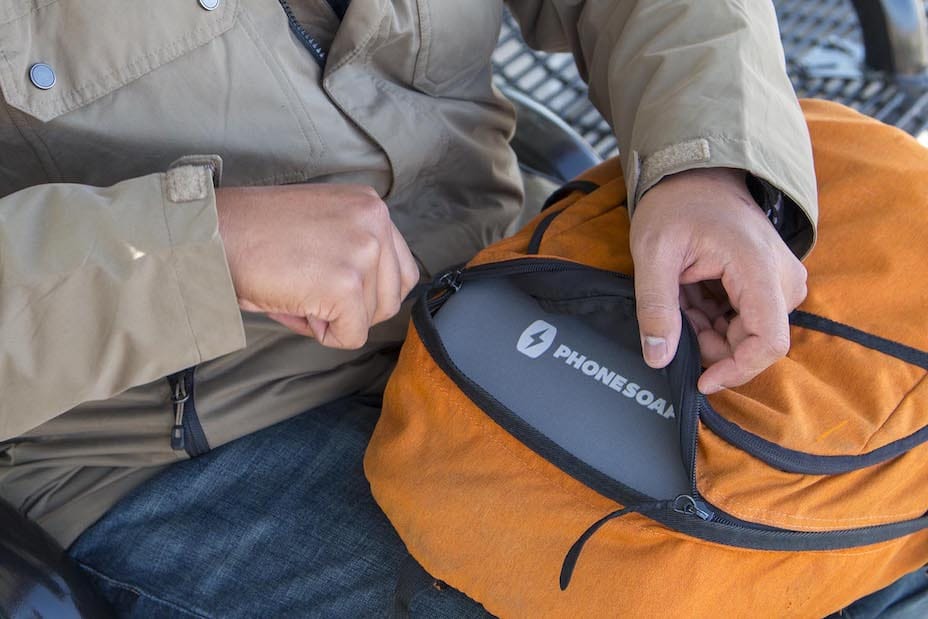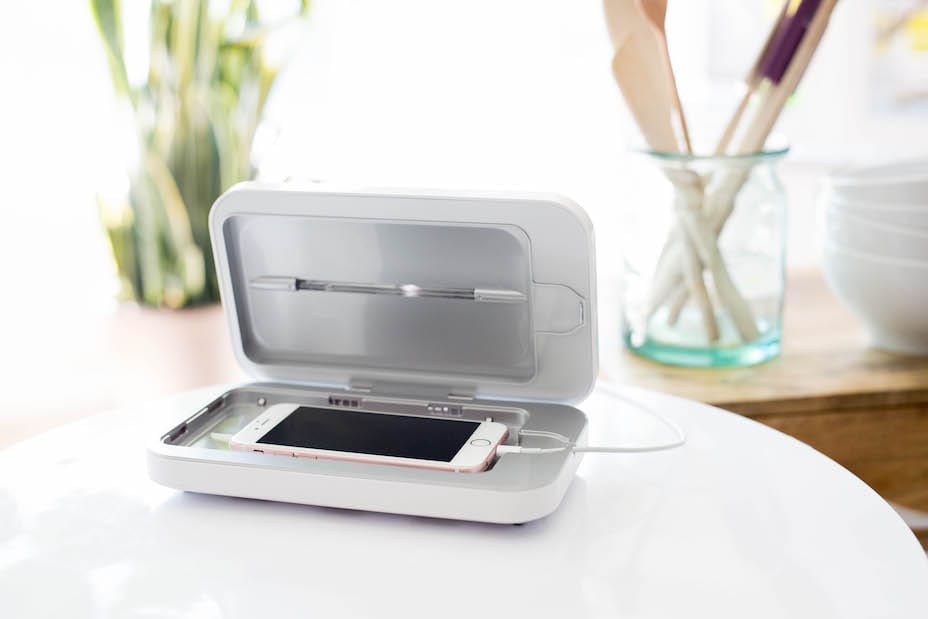OUR SMARTPHONES ARE 18 TIMES DIRTIER THAN PUBLIC TOILETS. FIND OUT HOW TO CLEAN BACTERIAS AND VIRUSES FROM THE DEVICE THAT’S CLOSET TO OUR HANDS, MOUTHS, EARS, EYES AND NOSES
TEXT: PAWIT MAHASARINAND
PHOTO COURTESY OF PHONESOAP
(For Thai, press here)
It’s reported that our smartphones–the 33rd organ for some, the third hand for others–are 18 times dirtier than public toilets.
After our hands touch this and hold that, collecting numerous germs, we use smartphones for many purposes. It’s estimated that everyday the distance each of us move our fingers across parts of our smartphones is about 600 feet (182 meters). In this work-from-home, shelter-at-home and social distancing era, that number may be even higher and surpass that of our walks. It’s ironical, and alarming, now that we’re trying to avoid germs from public places, watch our hands more frequently and thoroughly and yet we haven’t been taken a good hygienic care of our smartphones.
A research report in “The New England Journal of Medicine” (NEJM) states that at the temperature of 68F (20C), coronavirus can live on glass, metal or ceramics surfaces for a few days, plastics up to five, wood up to four, latex less than eight hours and aluminium two to eight hours.
Last week, CNN reintroduced PhoneSoap as “the phone sanitizer you didn’t know you needed.” That’s because this is not a new product. The two inventors Wes LaPorte and Dan Barnes started developing the idea of using the UV-C, or the ultraviolet with the wave length ranging from 200 to 290 nanometers, to sanitize smartphones in 2009 while studying at Brigham Young University in Utah. After a successful crowdfunding on Kickstarter and a business pitch on reality TV program “Shark Tank” in 2014, PhoneSoap was first manufactured and available in the market a year later. Their R&D has continued to the third phase now.
PhoneSoap 3 looks like a small tanning bed. Once plugged in, each auto-on-and-off sanitization cycle takes 10 minutes, during when and after which the phone can also be charged. The outside dimension is 12.7 by 21.6 by 4.48 centimeters, and the phone “bed” is 9.5 by 17.3 x 2. This considerably large size means most smartphones can fit. The design is simple and the only part that draws our attention is the thunder sign being lit during the cycle. Eight colors are available now and the easy-to-use PhoneSoap 3 can also clean key chains, skytrain cards, etc. which we often touch too.
Recommended for frequent travellers is PhoneSoap Go with the same size as that of PhoneSoap 3 but with a built-in 6,000 mAh battery. Each full charge takes 4.5 hours and after which it can be used for 45 sanitization cycles, 10 minutes each.
Also of the same size but with Qi wireless technology, PhoneSoap Wireless can charge the phone more conveniently without the chord.
Bigger and pricier is PhoneSoap Pro with more light bulbs emitting stronger UV-C and so it only takes five minutes to completely clean the phone.
The biggest one is HomeSoap which can be used to clean, also in 10 minutes, iPad Pro, toys, books, remote controllers, etc. that’s smaller than 9.3 x 23.46 x 33.47 centimeters. With this size and name, it’s best for home use.
The company will soon release their first air purifier AirSoap. Its groundbreaking Electric Wind technology generates a high energy plasma field killing bacteria and polarizing airborne particles as tiny as 14 nanometers–the new coronavirus is 100–while the now popular HEPA filters can only do 300. The device is 26.04 X 26.92 X 53.49 centimeters and is recommended for 55-square-meter room or smaller. In short, for Thai people, AirSoap takes care of our both two nagging problems–the PM 2.5 and COVID-19.
It’s not a big surprise then that the COVID-19 pandemic has significantly boosted the sales of PhoneSoap. If you order one now, you’ll get it in May at the earliest. In the meantime, similar and cheaper products have entered the market.
As the SARS-CoV-2 virus, the cause of the disease COVID-19, was only discovered late last year, PhoneSoap hasn’t actually been tested against it. That’s why Harvard Medical School’s clinical veterinarian Mia Liederman has warned that in order to eliminate this new coronavirus from the phone the public shouldn’t simply rely on a UV device that’s like this. PhoneSoap has countered with a fact: it’s already been proved, though, that PhoneSoap can kill H1N1pdm09, a similar capped virus.
PhoneSoap’s sales in the recent months also proves that in this time of public health crisis, we’re willing to try whatever guarantees our better living.
As for other ways to clean our phones, we can mix vinegar with water, of the same amount, put it in a sprayer, spray it onto a piece of microfiber fabric and then clean the phone. Alternatively for the mix, we can use 99% isopropyl alcohol and water, with the 7:3 ratio, or just use the 70% one without water, and then the same for the rest. Don’t forget that disinfecting wipes made specifically for smartphones are still not sold out, and we don’t need to take a queue number to purchase them.
Recently, Apple has changed their guidelines for cleaning phones and recommended a specific brand of disinfecting wet wipes with 70% alcohol; they were suggesting only dry cloth in the past. Meanwhile, their competitor Samsung has started offering UV-C cleaning service, free-of-charge, in 19 countries, including our neighbors Malaysia and Vietnam. In the next phase, Thailand, along with Singapore and Thailand, will follow suit.
And so, have you properly cleaned your smartphone yet?



